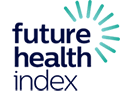Value vs. Volume: Australia’s next generation healthcare professionals enter the debate


Dec 15, 2020 - reading time 5 mins
By Matt Moran Managing Director for Philips in Australia and New Zealand

A new trend across consumer decision making is seeing people search for more enriching and valuable experiences when they make purchase choices. The trend is widespread, with industries once considered rigid needing to adjust to deliver consumers greater value and more enriching moments. Now the healthcare industry is under a spotlight as it faces an ageing population, outdated legacy systems and rapidly evolving approach to clinical care. Younger Australian healthcare professionals in the sector, those under the age of 40, are acutely aware of this trend, and the way they approach patient care is also changing. The number of patients seen in a day is no longer a clear metric of success, as the value of treatment becomes the biggest priority.
Traditionally, volume-based models – the number of patients seen or services delivered – was the bellwether used to define ‘success’ in healthcare. The more patients you interacted with, the more successful you must be at providing care. It remains a commonplace measurement across the industry, with more experienced generations in the sector still focused on the volume metric as a yardstick for success. But this is changing, as the next generation of healthcare professionals become more focused on measuring the positive impact they have on individual patients. Value-based care is set to become the norm in Australia, which will shake up the entire approach to diagnosis and treatment in healthcare. In Philips’ recent Future Health Index 2020 Australia Report, one-in-four (27%) younger healthcare professionals in Australia reported having a deep understanding of value-based care, on par with the average of all countries surveyed (22%) in measuring what a successful clinical interaction means. This shift aligns with the larger consumer trend of valuing experience, meaning it’s a trend that is likely to expand. Despite Australia’s younger healthcare professionals aligning with new methods of assessing successful clinical treatment, practices and institutions remain firmly entrenched in using volume-based models to measure success. More than 4 in 5 (85%) younger healthcare professionals state that their practice still uses volume-based metrics to measure the successful performance, most commonly reviewing the number of patients seen as a barometer for success. The government also remains closed off from value-based success measurement, with public sector practitioners having job performance and income tied directly to the volume of services rendered and spending on average 15 minutes for general consultations with patients, according to a Deloitte Access Economics General Practitioner 2019 workforce report. These divergent trends in measuring success are set to harbour more friction between providers, including hospitals and practices and the younger healthcare professionals directly interacting with patients on a daily basis. On average, Australian younger healthcare professionals deliver care to 76 patients per week, a figure lower than many other nations with tier one health systems like Germany (145 patients per week on average), France (119 patients per week on average) and Singapore (116 patients per week on average), and below the average of all countries surveyed at 100 per week on average. While this figure seems promising, requiring Australia’s younger healthcare professionals to engage with 11 patients each day places pressure on their ability to deliver an enriching clinical experience in each interaction, and limits the possibility for value-based treatment to be delivered. In Australia, the next generation of healthcare professionals are set to demand the opportunity to deliver the style of care they feel will provide the most benefit to patients. Meanwhile, medical practices and hospitals are likely to continue to demand greater volume from these same practitioners, to meet ever-increasing financial commitments. The practical implementation of technology across healthcare operations can help bridge this gap, providing the next generation of healthcare professionals with richer insights into what patients need, and freeing up critical time for more engaging and meaningful patient experiences. As consumers seek more value from their healthcare experience, a fundamental change in how success is measured is necessary to ensure the shift to a value-based model can flourish. This article was originally published on the Health Dispatch, a site dedicated to breaking news and commentary on the Australian private health sector, as part of the Future Health Index 2020 content series.
About Future Health Index
The Future Health Index (FHI) is a research-based platform designed to help determine the readiness of countries to address global health challenges and build sustainable, fit-for-purpose national health systems.



